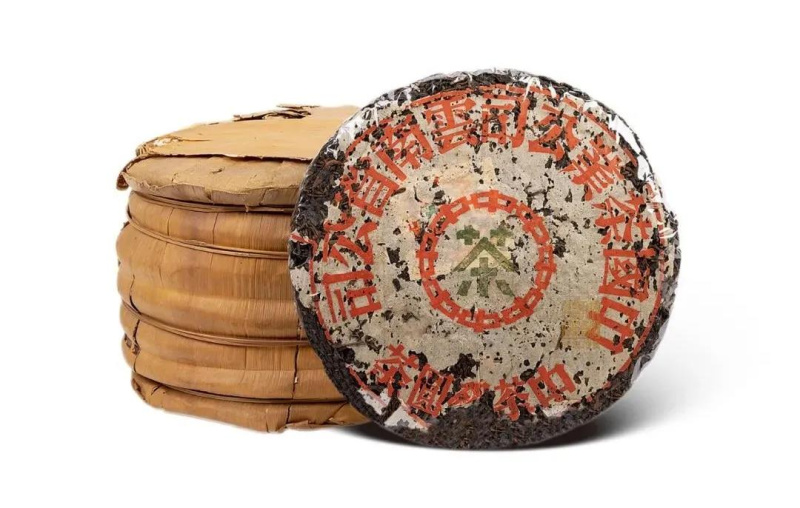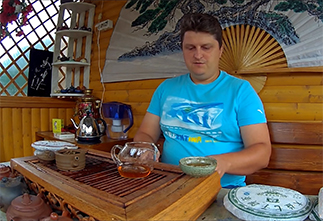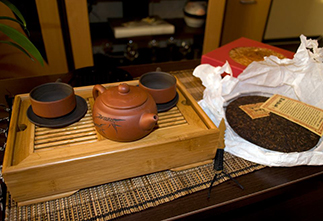Name: Ancient trees from Bingdao (Chinese: 冰岛古树).
Date of manufacture: 2009.
Claimed weight: 357 grams.
Origin: Bingdao Village, Shuangjiang Lahu Wa Bulan Dai Autonomous County, Lincang City, Yunnan Province shěng), China.
The raw material is the first-grade grade from the Daxueshan Old Tree Tea Park, Mengku. It is similar in characteristics to the raw material from Laoheizhai in another region of Lincang, but has a longer aftertaste.
An interesting feature of these areas is that they are located further north than other puer regions. The altitude of the plantations is within 2100-2200 meters. At such altitudes, photosynthesis is more effective due to less shielding of sunlight by the atmosphere. On the other hand, cold night temperatures do not allow the plant to grow much. Due to such conditions, tea leaves accumulate a high content of nutrients, so high-mountain raw materials are considered the highest quality.
|
Name in Chinese
|
冰岛古树 |
|
Pinyin
|
bīngdǎo gǔshù |
|
Translation
|
Tea from ancient Bindao trees |
|
Country
|
China |
|
District
|
Lincang |
|
Provinces
|
Yunnan (云南) |
|
Habitat
|
Биндао (冰岛) |
|
Raw material production date
|
2009 |
|
Year of pressing
|
2009 |
|
Pressing form
|
Bing Cha (Cake Tea) |
|
Declared weight, g
|
357 |
- Комментарии
- Вконтакте
Pu-erh is one of the most unique types of tea, which only gets better with age. Many people, when they first encounter this tea, wondered: why is pu-erh more often found in pressed form (cakes, bricks, tochas), and not in loose form? The reasons for this are related to both history and the practical aspects of storing and fermenting tea. Despite modern technologies that allow the production of loose pu-erh, the shape of pressed cakes remains unchanged. And pu-erh is more often found on sale in pressed form, for example, in the form of cakes or bricks, and loose pu-erh is less common. We will talk about the reasons for pressing pu-erh into cakes in this article.
Puer is a unique Chinese tea that is distinguished by its depth of taste, complexity of aromas and versatility of aftertaste. Its taste characteristics are formed under the influence of many factors, from growing conditions to the brewing method. Let's look at the main ones.
The question often arises: how to brew puerh correctly? Sometimes the phrase "to get high" is added to it. Moreover, everyone has their own understanding of this phrase. Some mean vigor, and some - intoxication. So how to brew puerh tea correctly? Let's consider several options.
Traveling through the tea mountains, we found ourselves in another land of blue roofs - the village of Zhongcai, which is located in the Menghai district of Yunnan province. According to tradition, we were shown another local tea tree, which, according to the Chinese, is at least a million years old :) The village is very authentic, not designed for tourists, there are many wild pu-erhs there and, of course, we were warmly received. They treated us to local cuisine and tea. We also asked the residents about the prices of tea and how they have changed in recent years.
The tea ceremony occupies a special place in the centuries-old Eastern tradition. And although the essence of this phenomenon remains constant, the nature and external manifestations of the tea ceremony in different nations have their own national characteristics. In each Chinese province, the tea ceremony and the tea used in it are varied: for example, residents of the southern provinces prefer green tea, and residents of the northern provinces - red tea, in Fujian province they more often use Oolong tea, and in Yunnan province Puer tea is widely known.


























































































